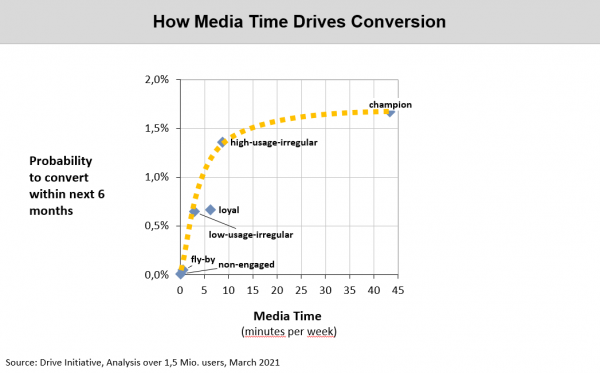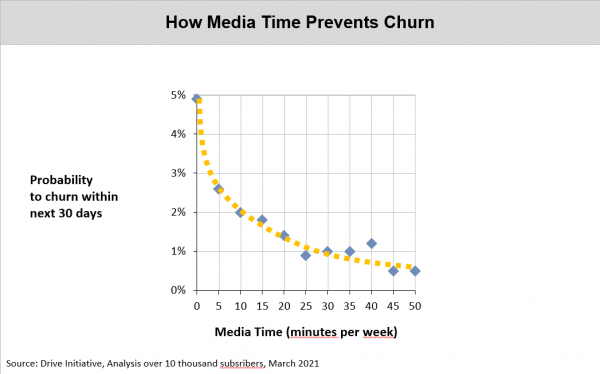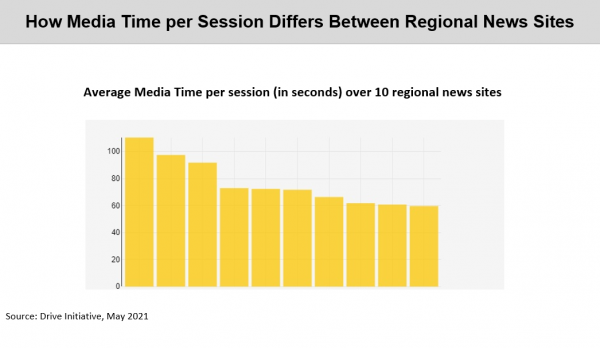The list of Key Performance Indicators (KPI) for newsrooms is long: Conversions, reach, active users, clicks, etc. At the German Drive Initiative (> 20 regional news sites), we realized that Media Time fits best. Media Time is defined as the amount of time a user spends on the site. A very simple but powerful KPI because Media Time measures the user engagement. And engagement is the principal driver for success in every digital subscription strategy.
We have analysed over 1,5 million users and have found strong empirical evidence how Media Time drives conversion and prevents churn.

An example may illustrate the graph. A typical Fly-by user visits the site every 2 weeks and reads 1-2 articles. The probability that this user becomes a subscriber is almost zero. If the user spends 10 minutes per week on the site, the probability of subscription rises by 130 times (+ 13.000 %).
We see similar correlations between Media Time and churn.

The main advantage of Media Time as core KPI for newsrooms is its simplicity. Everyone understands the concept at once. The more time a user spends on the site, the better. The second advantage is the easy integration in the workflows. You can measure the Media Time from the whole news site down to a single article. Or from the complete newsroom down to a single editor.
In the DRIVE initiative, we measure the Media Time for literally everything and compare it between the publishers. Although we know that user behaviour is very comparable, the differences between the publishers are astonishing, even up to 100%, as the following analysis shows.

With this analytic framework, a publisher can easily compare her own KPIs with other publishers and identify her biggest potentials.
By the way, other digital media providers, such as YouTube, also use media time as a core variable for controlling their content. And with these offers, the publisher competes for the most important resource a modern person has: her time.


